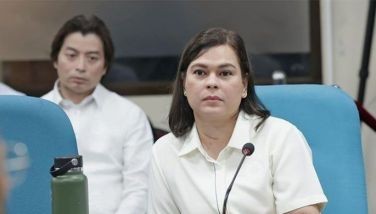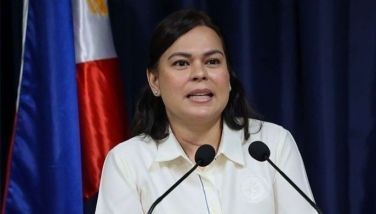Contrived

It is true: political influence could bend the hard logic of engineering.
In the last days of the Arroyo administration, work was rushed to finally “close the loop,†linking the LRT-1 line and the MRT. Closing the loop meant great convenience for our harried commuters. It improves ridership on both lines and doubles the options passengers might take to get from one point to the other in the urban tangle that is Metro Manila.
The two lines would connect at the junction of Edsa and North Avenue. On that same terminal, MRT-7, coming in from Commonwealth and down North Avenue, would link with the two other lines.
A real central station, with three parallel tracks on the same grade and a spacious passenger concourse was designed. Passengers will walk only a few meters from one train to the other. The SM group did not hesitate paying the DOTC P200 million for “naming rights†to the central station. Piles were driven into the ground to provide the base for the central station.
To this day, however, the loop has not been closed. The terminal has not been built. The last station of the LRT-1 is at the Roosevelt Avenue junction. From there, passengers take a bus to get to the MRT North Avenue terminal, causing traffic jams and long queues in the area. There is simply no sidewalk space in that area to accommodate foot traffic and no spacious concourse overhead to accommodate passengers.
The venerable Ping de Jesus, when he was DOTC secretary, did see the urgency of building the central station. On June 2, 2011, his department issued an invitation to bid for the project, following the logical design of building the structure astride SM City to accommodate the tracks of MRT-7.
Alas, de Jesus resigned his post soon after, exasperated over the insubordination of one Virginia Torres of the LTO. Mar Roxas replaced him at the post.
When Roxas took over, the project somehow disappeared. Nothing was heard from the DOTC about it: no letter informing the bidders, no word about the P200 million SM paid for “naming rights.â€
Then, on Nov. 21, 2013 official notice was given about a cluster of PPP projects being approved by the NEDA. Those projects included the controversial “privatization†of the Orthopedic hospital. The central station linking MRT, LRT-1 and MRT-7 appeared on that list — except that it was completely redesigned and moved from where piles were already driven to the existing MRT terminal astride the Trinoma Mall.
There was something strange in the NEDA approval for this project: it was conditional on the matching of the tracks and feasibility of turn-back design for the trains. The conditionality is a telltale sign that the bureaucrats approving the project design were under some political pressure.
The new design approved by NEDA will punish commuters.
There will be no common concourse for the three train lines converging here. At the Trinoma location, only MRT and LRT-1 tracks can be accommodated — with the trains coming head-to-head and then maneuvering back for the turn-around. That will increase headway time and prevent us from increasing the frequency of train service during the rush hours.
In this design, MRT-7 passengers will be unloaded somewhere along North Avenue and walk 330 meters to the MRT. That is about the distance between two train stops.
The new design features a “walkalator†(like we see in some advanced airport terminals) that will ferry passengers to and from MRT-7. Given our experience with the constant disrepair of escalators in the existing MRT service, that contraption does not reassure.
The DOTC says this is a cheaper option. Of course, it is. It is a station for only two lines — with trains from the LRT and LRT-1 approaching each other head-to-head as in that infantile game of “chicken.†A separate station for the MRT-7 (with the “walkalatorâ€) will have to be built later at additional cost, surpassing the cost of situating a central terminal in its original convergence point.
What NEDA approved is not really a central station. It is better described as a trial by ordeal for commuters for decades to come. This is an abomination that could only be produced by combining the brilliance of Mar Roxas and that of Jun Abaya.
The MRT-3 management itself objects to the Trinoma design, saying it prevents attainment of the 2-minute headway needed to reduce congestion. The new design forecloses future seamless operation between the rolling stocks of the LRT-1 and the MRT.
There are other horrors.
The Trinoma design very likely violates the MRT-7 concession agreement where government ensures “the interconnection of MRTS with MRT-3 at the North Edsa joint station and establishment of the joint station.†The signed technical documents specify the common station to be near the SM Annex.
Rebuilding the existing MRT Trinoma station will mean closing rail service for weeks and maybe months, cutting off the depot underneath the Trinoma mall. Imagine the traffic congestion and displaced passengers at a time when other infra projects are being rushed. Besides, the MRT Trinoma station is owned by the MRTC, not by government. There will surely be a court case here.
There will also be legal issues over developmental rights arising from the LRT-1 line encroaching into the MRT-3 station access. The owners of the MRTC (and those of the upcoming MRT-7) are not going to sit by idly.
And finally, the key question: What compelling reason is there to push the central station to the Trinoma side?
- Latest
- Trending




























